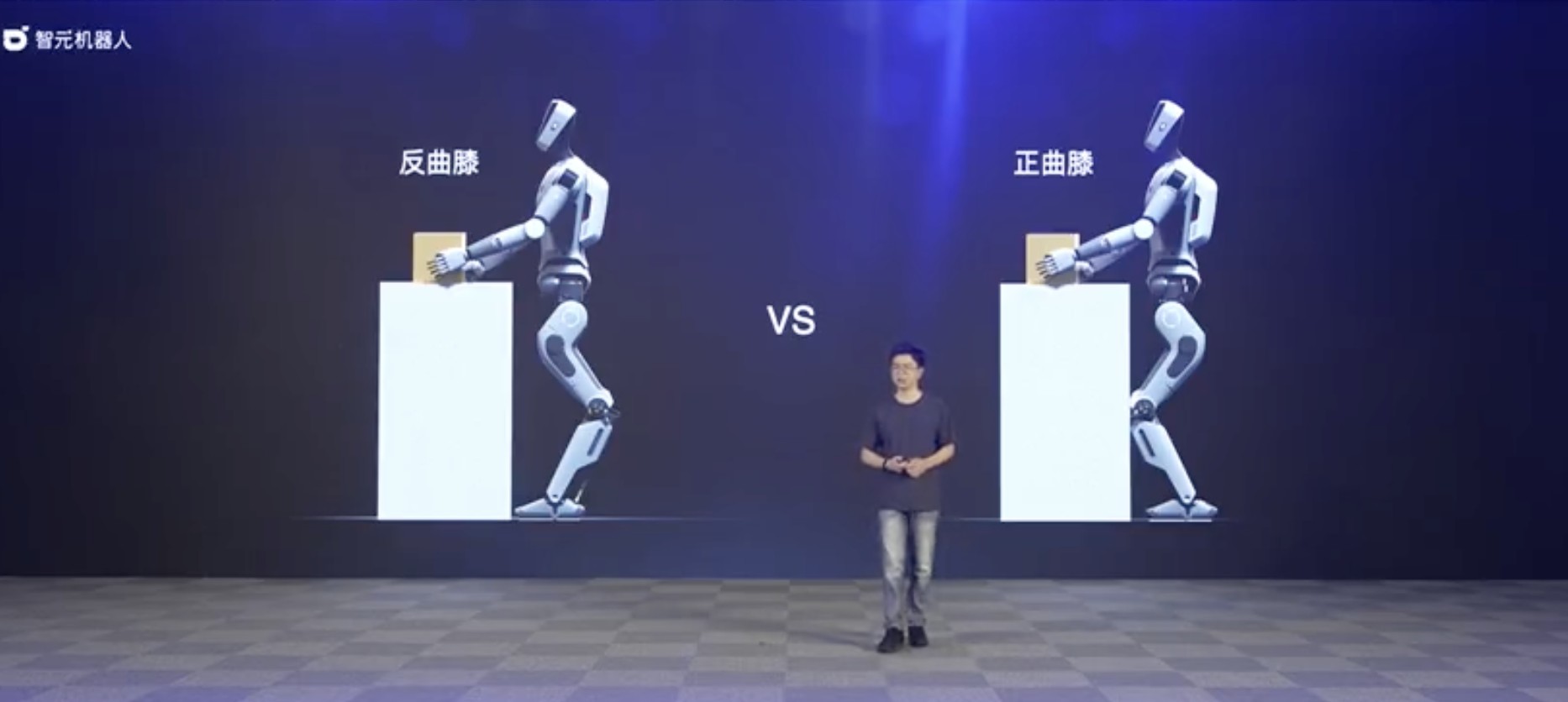Following months of anticipation, Agibot has finally released a new product: the Expedition A1. Founded by Peng Zhihui, who is also known as Zhi Huijun, Agibot recently secured funding from various investors, including Chinese automaker BYD and global private equity firm Warburg Pincus.
Born in 1993, Zhi has undergone a remarkable journey that included a stint under Huawei’s “Genius Youth Program.” Despite receiving a lucrative million-yuan annual salary, he decided to leave Huawei in December 2022 and set up his own company, focusing on the R&D of intelligent robots.
Expedition A1 is a humanoid robot that stands at a height of 1.75 meters and weighs 53 kilograms. It is initially designed for factory settings and aspires to find its place in household kitchens.
The Expedition A1 has achieved stable walking capabilities, capable of reaching speeds of up to seven kilometers per hour. It’s a versatile machine, proficient in tasks such as tightening bolts on assembly lines, handling inspection tools, conducting vehicle exterior inspections, and it can even be utilized in laboratory experiments.
Agibot’s goal is to further develop Expedition A1 into a robotic household assistant. Picture it fetching and pouring water, delivering medications, and even performing household chores like preparing food and cooking. In the future, Expedition A1 could even help children with their homework, validating good work with a thumbs-up of approval.

During the recent product launch, an Expedition A1 unit made a confident entrance, gracefully stepping onto the stage upon the invitation of Zhi.
The robot boasts 49 degrees of freedom and can support up to 80 kilograms of weight across its entire build. Each of its arms can handle loads of up to 5 kilograms, attributed to its computational power of 200 tera operations per second (TOPS). TOPS is a measure of computing operations an AI accelerator can handle in one second at 100% utilization.
The robot is also agile, with its core joints powered by the proprietary PowerFlow joint motor which utilizes a direct drive solution to deliver a torque exceeding 350 newton-meters while weighing only 1.6 kilograms. Comprising a built-in liquid cooling system, Expedition A1 units can operate for extended periods of time with a single charge.
The legs are a critical element for bipedal robots, and the Expedition A1 adopts a unique approach. Its knees are reverse-jointed, granting it a wider range of motion and more flexibility in comparison to humans.

“We envision it as a capable worker rather than a mere human mimic,” said Zhi during the launch event.
The Expedition A1 also incorporates the dexterous SkillHand technology developed by Agibot, which offers 12 active degrees of freedom and five passive degrees of freedom. In the field of robotics, the degree of freedom correlates with flexibility and adaptability, but also price. Expedition A1’s fingertips are equipped with sensors for visual and tactile perception, reducing precision requirements for hollow cup motors in its joints and, consequently, lowering production costs.
The robot comes equipped with a color and depth (RGBD) camera and LiDAR sensors, enabling it to analyze its surroundings. This enables it to respond resiliently against environmental interference, remaining mechanically stable even when pushed with force by a person.
What adds an element of versatility to Expedition A1 is its modular design, allowing the use of modular components such as screwdrivers and electric drills that are interchangeable with its hands. Model variants such as bipedal, wheeled, or tracked “feet” are also available to serve various scenarios.
Agibot has not disclosed specific pricing figures but has claimed it will try to keep the price of Expedition A1 below RMB 200,000 (USD 30,000) per unit. However, recent estimates from Unitree suggest that the actual price could be closer to RMB 650,000 (USD 90,000).
The cost is closely tied to the components used, and Agibot has taken the lead in developing most of Expedition A1 core components like motors and dexterous hands, achieving a domestic production rate of 80–90%.
According to Zhi, Expedition A1 will initially focus on serving B2B scenarios, particularly within the industrial manufacturing sector. The aim is for the robot to perform tasks such as bolt tightening, adhesive application, and visual inspections on automobile assembly and sub-assembly lines. It is also primed for laboratory applications, including material handling and biological experiments.
Presently, Agibot has engaged with several manufacturing enterprises and anticipates commercial deployment to commence next year. The Expedition A1 model has undergone training for a variety of actions tailored to different scenarios, including screwing bolts in computer, communication, and consumer electronics, as well as automotive equipment production settings.

In the context of household applications, Zhi envisions the Expedition A1 to eventually evolve into a multifaceted assistant, capable of taking on three primary roles: chef, nanny, and caregiver. In its culinary capacity, it will ideally be capable of preparing a wide array of Chinese and Western dishes, involving various cooking methods such as stir-frying, roasting, and more. In the caregiving role, it could assist with laundry and offer care to elderly individuals with varying degrees of physical ability, aiding in rehabilitation exercises and preparing their meals.
While the idea of a robot cooking and doing laundry may be intriguing, Zhi noted that it would likely take another 5–8 years before humanoid robots are advanced enough for use in households. Zhi hopes he can keep Agibot’s robots affordable to make them accessible to consumers.
KrASIA Connection features translated and adapted content that was originally published by 36Kr. This article was written by Yang Xiao for 36Kr.

